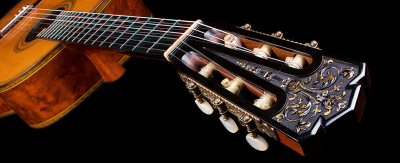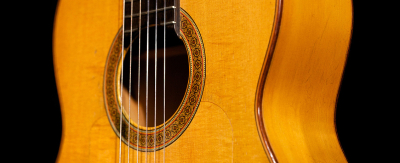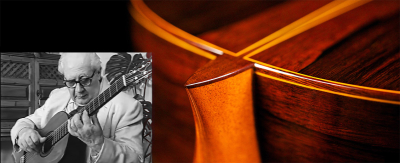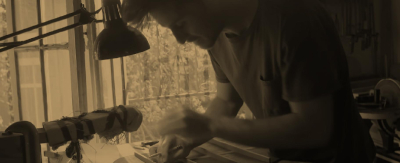Frequently Asked Questions
How can we help you?
Browse by topic
Auction Financing GSI Foundation Guitar Lesson Policies How to buy a guitar Payment Sell your guitar to GSI Why Buy From GSI? How to care for your guitar People Often ask Purchase Policies Return policies Shipping policiesCommonly asked questions about guitars
What is the difference between a factory guitar and a handmade guitar, and what are some examples?
While these are not technical terms (and there are always exceptions), guitar making can be broken down into four broad categories:
1. Single Artisan: Makers like Dominique Field, Edmund Blochinger, Richard Reynoso, etc. who really work entirely by themselves. At this level, they buy raw wood, or sometimes even chop trees down themselves, or at least visit mills and hand-select their wood. With the exception of tuning machines and strings, they build or create all the parts, including necks, headstocks, veneers, stains, rosettes, etc. These makers usually apply the finish to the guitar themselves, once the build is done. The overwhelming majority of luthiers at this level prefer the use of shellac, applied with the French polish method, although some makers also work with synthetic varnishes which are typically sprayed.
2. Artisan Workshop: This is where there are multiple builders working together. This could range from the Fleta workshop (a guitar made in 1970 for example, would have been the combined effort of Ignacio, Francisco and Gabriel Fleta). No single guitar at that time can be proven to be built 100% by Ignacio (or either of his sons for that matter). They were likely all built with joint effort, but all the parts are built from scratch in the workshop by those three makers. The labels at that time also read “Ignacio Fleta e hijos”. The Romanillos workshop is another famous example (Jose and son Liam), Teodoro Perez (Teodoro and son Sergio, daughter Beatriz and son-in-law Marco Tejeda), etc. These workshops are usually family-run and very small.
3. Production Workshop: This would include Sakurai-Kohno, Hill Guitar Company, Jose Ramirez concert guitars, etc. It is a larger-scale enterprise where there are highly-skilled craftsman who have typically been trained in guilds (at least in Spain), but the individuals don’t build guitars with labels bearing their own names. In this environment, the workers are specialized at specific tasks (like varnishing or assembling the box, etc.). Sometimes at this level (but not always), “parts” (rosettes, purfling, etc.) are bought from outside sources but all construction is done in-house. Depending on the number of workers, workshops such as this often produce in the range of 20 guitars (or more) per month. Wolfgang Jellinghaus guitars fall in this category as another example.
4. Factory: This is certainly the broadest category, and is where you most often find the “assembly line” style of manufacturing. There are some factories like this in Spain and of course everyone knows that these are currently springing up in grand style in China. There is a higher degree of automation and greater reliance on machinery which ensures consistency of the final product, which is more “mass produced”. Workers here are not necessarily skilled craftsmen – usually they are trained in how to assemble pre-fabricated parts together, like legos, on an assembly line.
Again, there are always exceptions and category-blending, whether it’s an individual maker who builds in batches, buys his rosettes or even has a professional varnisher do his polishing, to “factories” with as few as a dozen employees.
What does quarter sawn mean?
A quarter sawn board is cut along the radius of the log, from the center to the edge. The affect is to produce a piece of material with the greatest number of annular rings possible running across the edge of the board. It is the most structurally sound cut of wood and is best for transmitting sonic vibrations.
What is bracing and how does it affect sound?
Bracing consists of strips of wood arranged in a pattern and glued to the underside of the soundboard. Its function is to support the soundboard and to transmit vibrations across it.
What are the differences between rosewood and ebony fingerboards?
Ebony is much harder and denser than rosewood. It is also black in color, sometimes bearing light “flames” in the grain. Ebony is a bit more expensive and should last beyond the lifetime of the guitar. Some players prefer rosewood, claiming that being softer, it cushions the fingertips to some degree. Rosewood fingerboards are much lighter and more often used on flamenco models.
What are the differences between Indian and CSA rosewoods?
CSA Rosewood has more of a crystalline or glassy appearance, often exhibiting ornate grain patterns, which provide a feast for the eye. Indian Rosewood has straight grains and no pattern. It is currently illegal to export CSA Rosewood for the use of guitar building; hence, making it a rare commodity and more sought after. Some guitar makers such as Fleta, Simplicio, and Friederich insist that Indian Rosewood is the ideal choice. Neither is really superior over the other in terms of sound.
What other types of finishes are used?
Common lacquer and acid catalyzed finishes are the other choices among guitar builders. The common lacquer finish is obtained by spraying lacquer (usually nitro-cellulose) to the surface, allowing it to dry, sanding it, then repeating the process several times until a suitable coating is achieved.
An acid catalyzed finish (sometimes called “resin” finish) consists of two parts which are mixed just prior to application; a type of varnish and a hardening agent. The finish is quick drying and very durable. Since it is also not solvent soluble, it needs to be sanded away completely in order to be restored. Kohno and Jose Ramirez are two well-known makers who have utilized this method.
What is French polish?
French polish is actually a method used to apply varnish in which hundreds of thin coats of shellac (sometimes blended with other resins and oils, depending on the tastes of the varnisher) are applied with a solvent-damp rag. Although it is a rather delicate finish, more susceptible than other finishes to dings and scratches, French polish is considered to be the most desirable. Over time, when the finish becomes dull with wear, the shellac can be restored to its original luster by applying new finish to the old. It is wise to have an expert repairman who is familiar with the technique to do the job.
What are the differences between cedar and spruce soundboards?
The most noticeable and most obvious difference is in appearance. Spruce is light blonde in color, almost sometimes with a honey/amber tint, while cedar is darker and appears in various shades of brown. Cedar bears a distinct, pleasant odor and is slightly more porous, which may contribute to a faster responding sound. However, there are many more factors that contribute to the overall sound of the guitar. These include internal structure, thickness of material, pattern and shape of the instrument, type of finish, and type of strings. Spruce is the traditional wood that was used for centuries of guitar making. Cedar is much newer on the scene, having become popular and widespread in its use, starting in the mid-1960’s.
However, the sonic properties that most luthiers and players acknowledge that distinguish these two materials from each other is that spruce (which on average tends to be denser than cedar) produces a clearer tone marked most notably by the presence of a strong and clear “fundamental” at the core of every note, with very controlled overtones which maintains a high degree of clarity and separation between notes. Cedar on the other hand, which on average is a less dense wood, emits a richer overtone content, making the notes sound “warmer” or “fatter” or “silkier”, creating a more blended sound. Spruce tends also to welcome tonal color/modulation with different right-hand positions, whereas cedar tends to favor a more uniform sound, which is why some people call cedar guitars “more forgiving”. Having said all this, expert luthiers know how to nuance their tops during the build process to give cedar more “spruce-like” characteristics and spruce tops more “cedar-like” qualities. It’s also important to recognize that spruce tops, when new, tend to be stiffer with a tighter sound and require a longer “break-in” time whereas cedar tops require considerably less play-in time by comparison. For some, this can make it difficult to judge how a “new” spruce guitar might sound after having been played for weeks, months or even years. As new spruce guitars get “played in” they gradually warm up and lose a degree of their initial “stiffness” when new.
How can one tell the difference between a student guitar and a concert guitar?
Price-wise, a decent solid-top student model starts at $300 whereas a concert model starts at about $2000. Upon inspection you’ll find that superior building materials are used to produce a concert model – deluxe machine heads, real bone nut and saddle, rosewood with an often beautifully figured grain pattern, and soundboard material with a tight and uniform grain pattern from the finest quarter-sawn wood.
Looking at the label may also provide some clues. A concert guitar will often, but not always, bear the handwritten signature or initials or stamp of the master builder.
What are the differences between classical and flamenco guitars?
The differences between classical and flamenco guitars lie in their materials, construction and sound.
Materials: Classical guitars are generally made with spruce or cedar tops and rosewood or mahogany backs and sides to enhance sustain. Flamenco guitars are generally made with spruce tops and cypress or sycamore for the backs and sides to enhance volume and emphasize the attack of the note.
Construction: The body of a classical guitar is generally deeper and the woods are slightly thicker. Flamenco guitars have a flat or negative (before string tension) neck relief, making the action very fast at the cost of some buzzing. The strings are also closer to the body on flamenco guitars to facilitate tapping. Flamenco guitars often bear a “golpeador”, which is a sheet of plastic mounted to the face of the guitar to protect its finish.
Sound: The classical guitar is designed to give the soloist the tools to perform poly-timbral music: “An orchestra in a box”. The attack is soft with a longer and gradual decay. The flamenco guitar is designed to cut through the sound of dancers stomping their feet. The sound is a bit more percussive, a loud sonic burst followed by a swift decay







